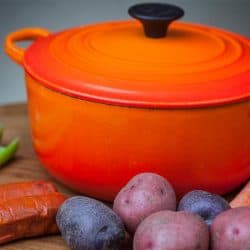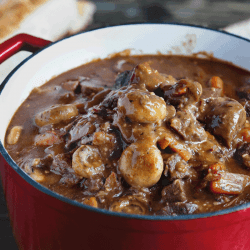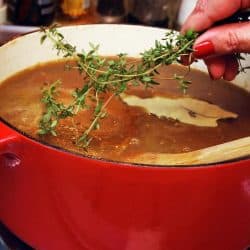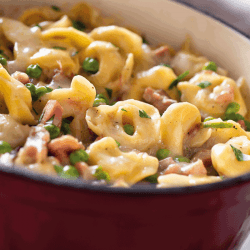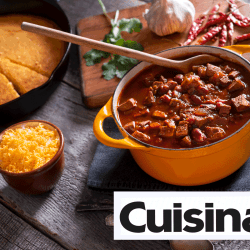Besides price, one feature that holds chefs back from buying a Dutch oven is its weight. While Dutch ovens don't literally weigh a ton, it could feel like a ton as you're moving one around the kitchen. Not every chef may feel comfortable safely handling this classic cast-iron cookware.
If you're afraid a Dutch oven's weight will be too much to bear, then you should check out the research we've done below.
On average, medium to large cast-iron Dutch ovens weigh 13 - 17 pounds. However, some smaller sizes and alternative Dutch oven models, like ceramic, weigh under 10 pounds. Cast-iron cookware will always be heavier because it's thicker than other materials.
While cast-iron Dutch ovens are incredibly versatile, they can be a pain to transport around the kitchen. If chefs are hesitant to get a Dutch oven due to its weight, they may consider alternative options. Hopefully, the tips below will help you "weigh" your Dutch oven decision.
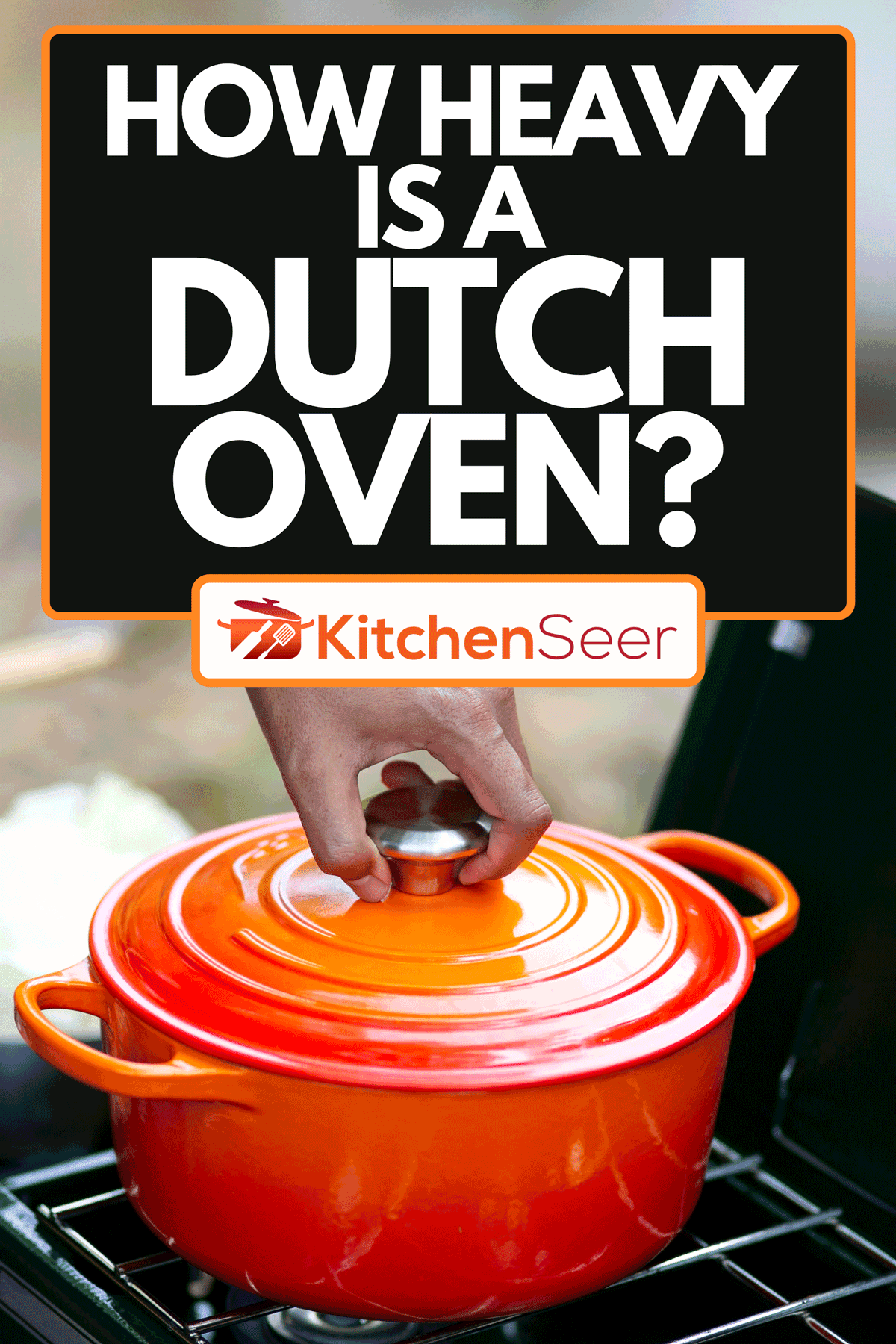
How Heavy Is An Average Dutch Oven?
Generally speaking, most medium to large cast-iron Dutch ovens are well above 10 pounds. Depending on the manufacturer's chosen materials, a standard six-quart Dutch oven could weigh anywhere from 13 pounds to 17 pounds.
Of course, these weights will fluctuate depending on how large your Dutch oven is. For instance, you could find two-quart Dutch ovens that weigh about 6 pounds. You may not be able to feed many people with these ovens, but they are easier to take on camping trips.
Find out more on this Amazon link.
If you're getting a standard-sized Dutch oven made with cast iron, you should expect it to weigh more than other pieces of cookware.
Are Enameled Dutch Ovens Lighter Than Non-Enameled Ovens?
There's no difference in weight between enameled and non-enameled Dutch ovens. Both of these products are cast iron, so they will have the same average weight.
The significant distinction between these Dutch ovens is on the inside. Enameled Dutch ovens have a smoother surface thanks to the coating of enamel. This feature makes maintaining and cleaning your Dutch oven easier because you don't have to season it.
Find out more on this Amazon link.
If you'd like to learn more about all the different kinds of Dutch ovens, be sure to read our guide entitled, "Types, Sizes, And Dutch Oven Brands You Should Know."
Why Are Dutch Ovens So Heavy?
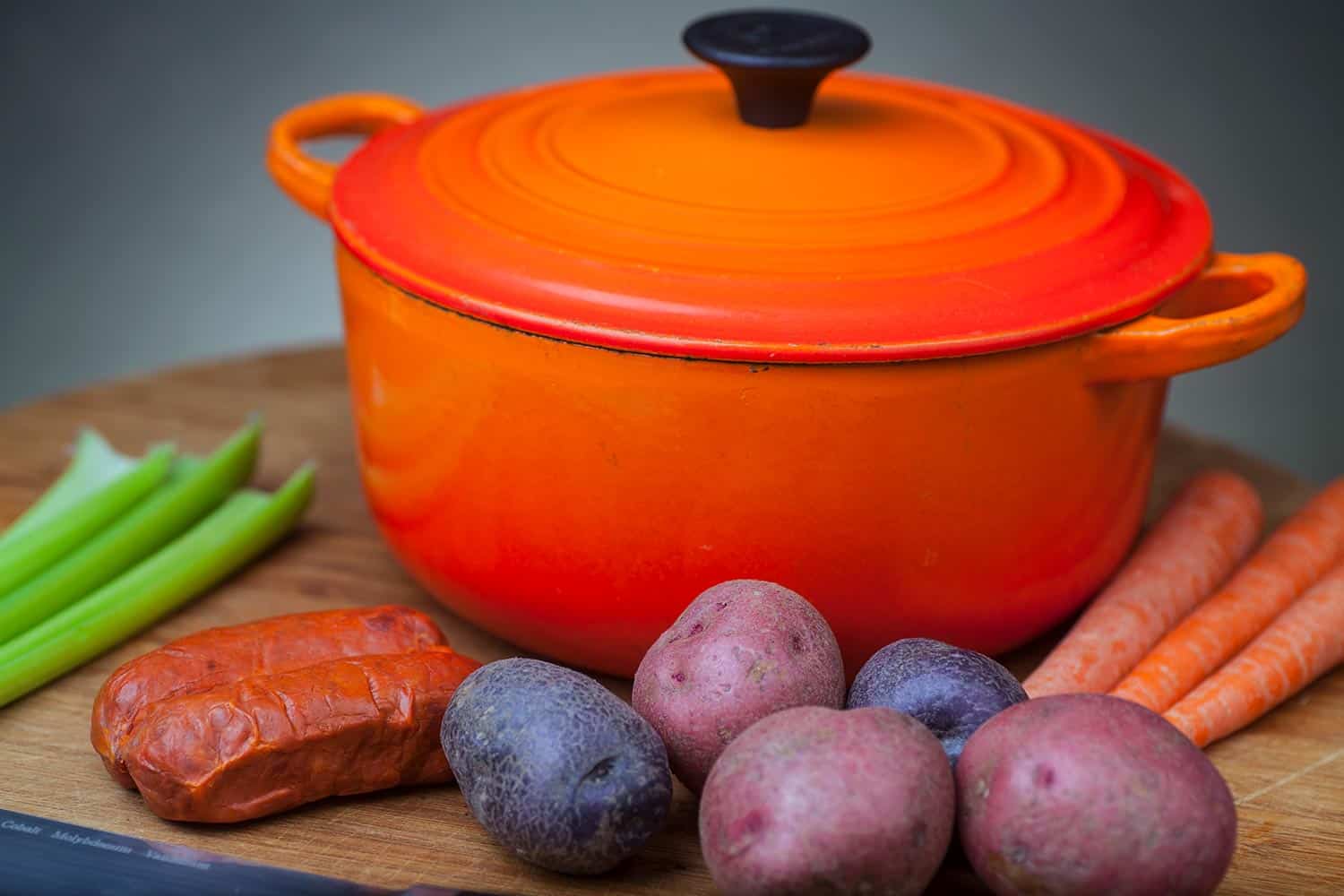
Traditional Dutch ovens are heavy because they're made with a dense layer of cast iron. The benefit of using cast iron is tremendous heat retention, longevity, and durability. On the downside, this material is weighty.
Cast iron isn't as "ductile" as other materials, which means it could crack easier as manufacturers mold it. Therefore, companies need to add a thicker layer of cast iron to Dutch ovens compared with other materials. The more material there is, the heavier it will be.
Even in skillet form, cast iron is one of the heaviest materials to work with.
Also, the lid of a Dutch oven has to be heavy to help trap moisture. This is the main reason why Dutch ovens create such an excellent atmosphere for baking DIY bread.
If you'd like to learn more about the pros and cons of cast-iron cookware, be sure to check out this video:
Is There A Dutch Oven That Is Not Heavy?
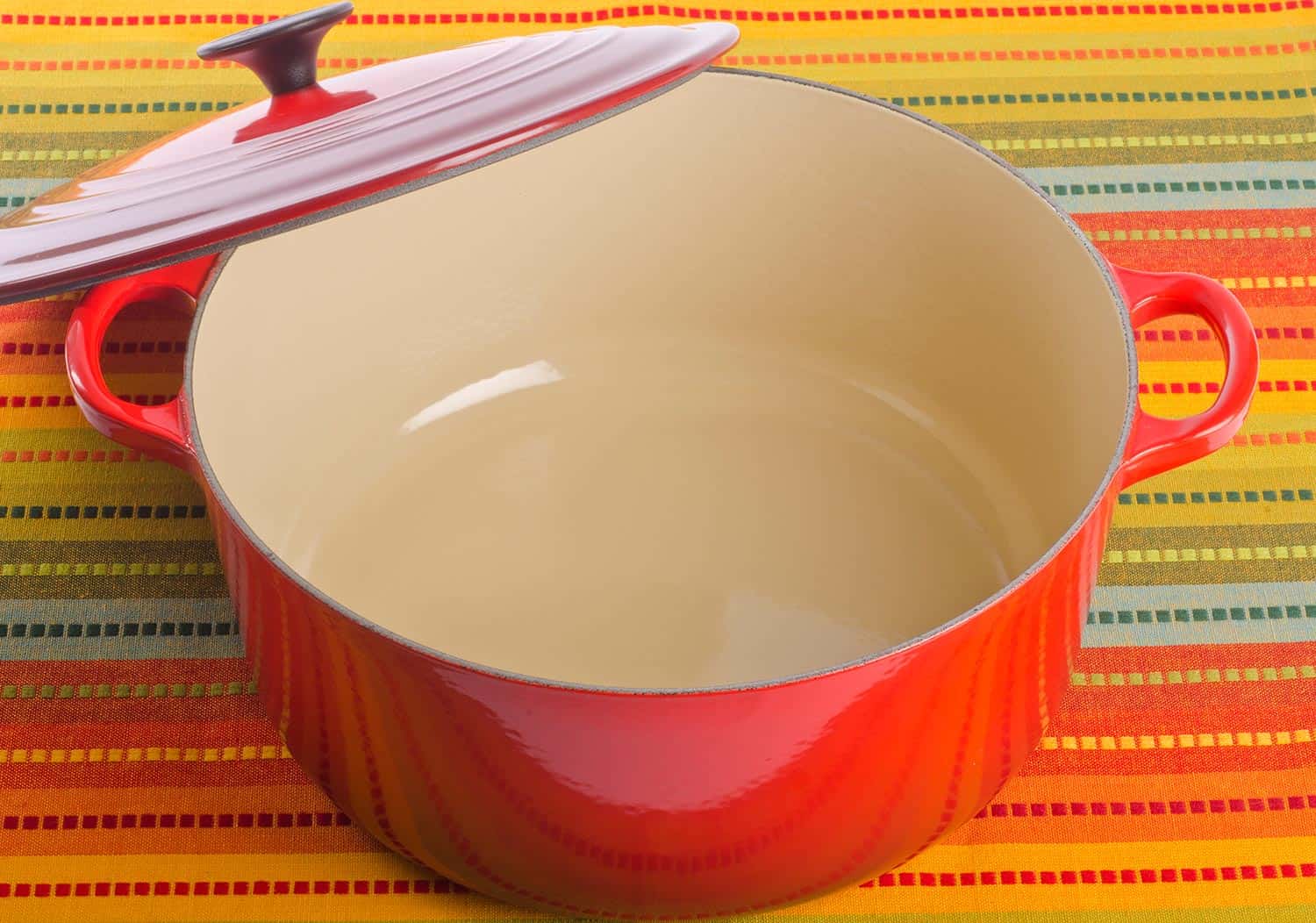
You can find Dutch ovens that aren't as heavy, but they won't have the same qualities as a cast-iron unit. Since these alternative models are thinner than cast iron, they don't have the same heat retention or transfer. If you're not careful, some of these alternatives could scorch your food, and they may start to degrade faster than cast iron.
However, you could find Dutch oven models made with stainless steel, aluminum, and ceramic materials. These materials do an admirable job mimicking a traditional Dutch oven without weighing as much.
Find out more on this Amazon link.
Just be sure to check the manufacturer's recommended uses before opting for one of these non-cast iron options. For instance, while these alternative ovens may work for stews and soups, they usually aren't as good for delicate tasks like baking bread.
Please watch this review on America's Test Kitchen to learn why professional chefs always prefer cast-iron Dutch ovens:
Is A Casserole Dish The Same As A Dutch Oven?
Casserole dishes aren't the same as Dutch ovens. Unlike Dutch ovens, you can't use a casserole dish on the stovetop. Instead, you could only place casserole dishes in an oven to make dishes like, well, casserole!
Also, casserole dishes aren't made with cast iron. Instead, these dishes are usually made out of Pyrex or ceramic.
Find out more on this Amazon link.
If you'd like to learn more about the basics of using casserole dishes, please check out our post, "Can You Put Casserole Dishes In The Oven?"
Are Heavier Dutch Ovens More Expensive?
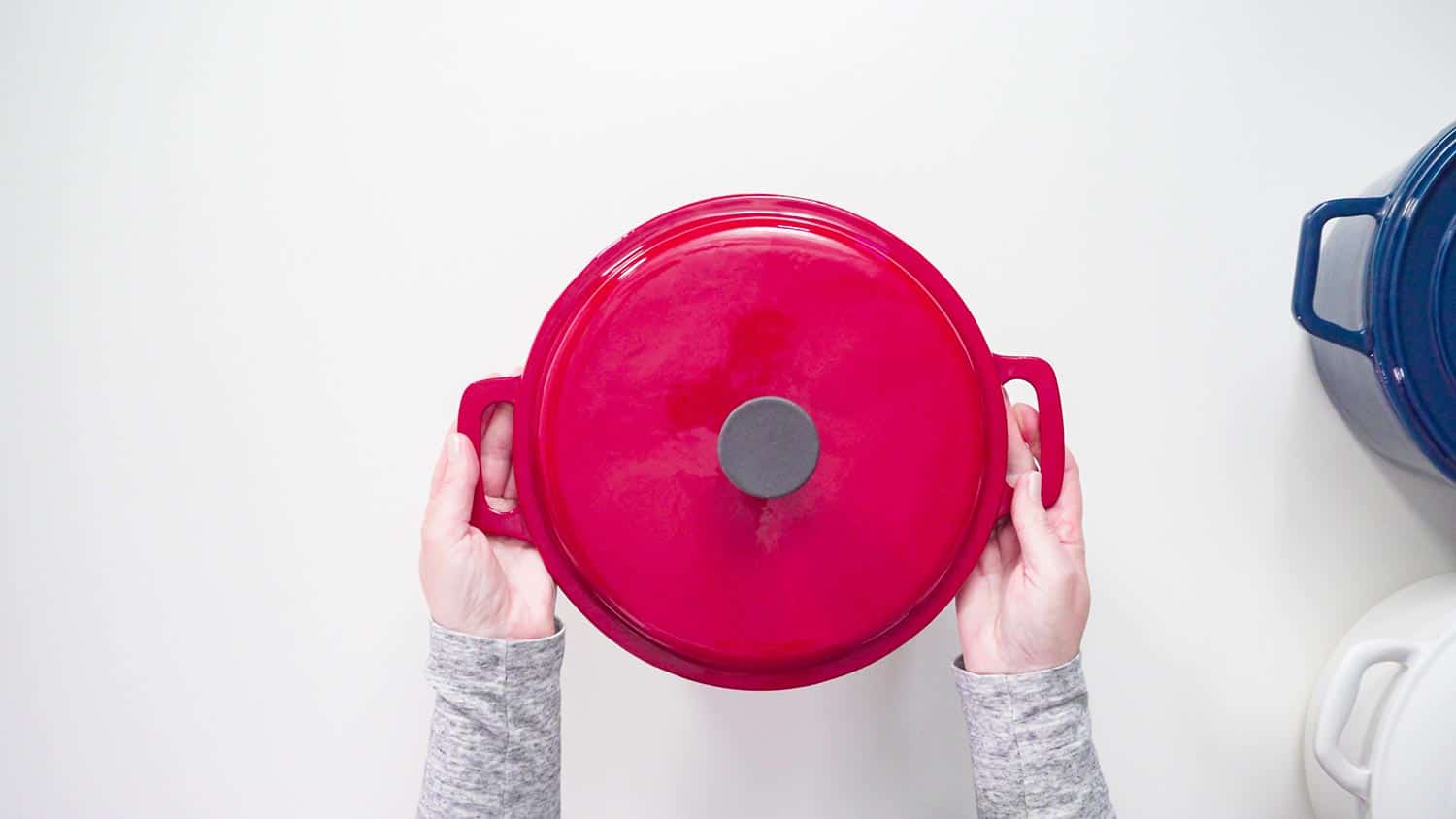
There's no evidence that a Dutch oven's weight is tied to its price tag. Generally, your oven's size, materials, and brand reputation will play a more influential role in its final cost.
For instance, enameled Dutch ovens tend to cost more than non-enameled units. The reason for this price hike has to do with the glassy coating inside enameled ovens. This extra coating will save you a lot of cleaning time, but it will also cost you more upfront.
While larger Dutch ovens cost more than smaller units, that's not necessarily related to the product's weight. Like any other item, the more materials manufacturers use, the more it will cost.
Do Heavy Dutch Ovens Last Longer?
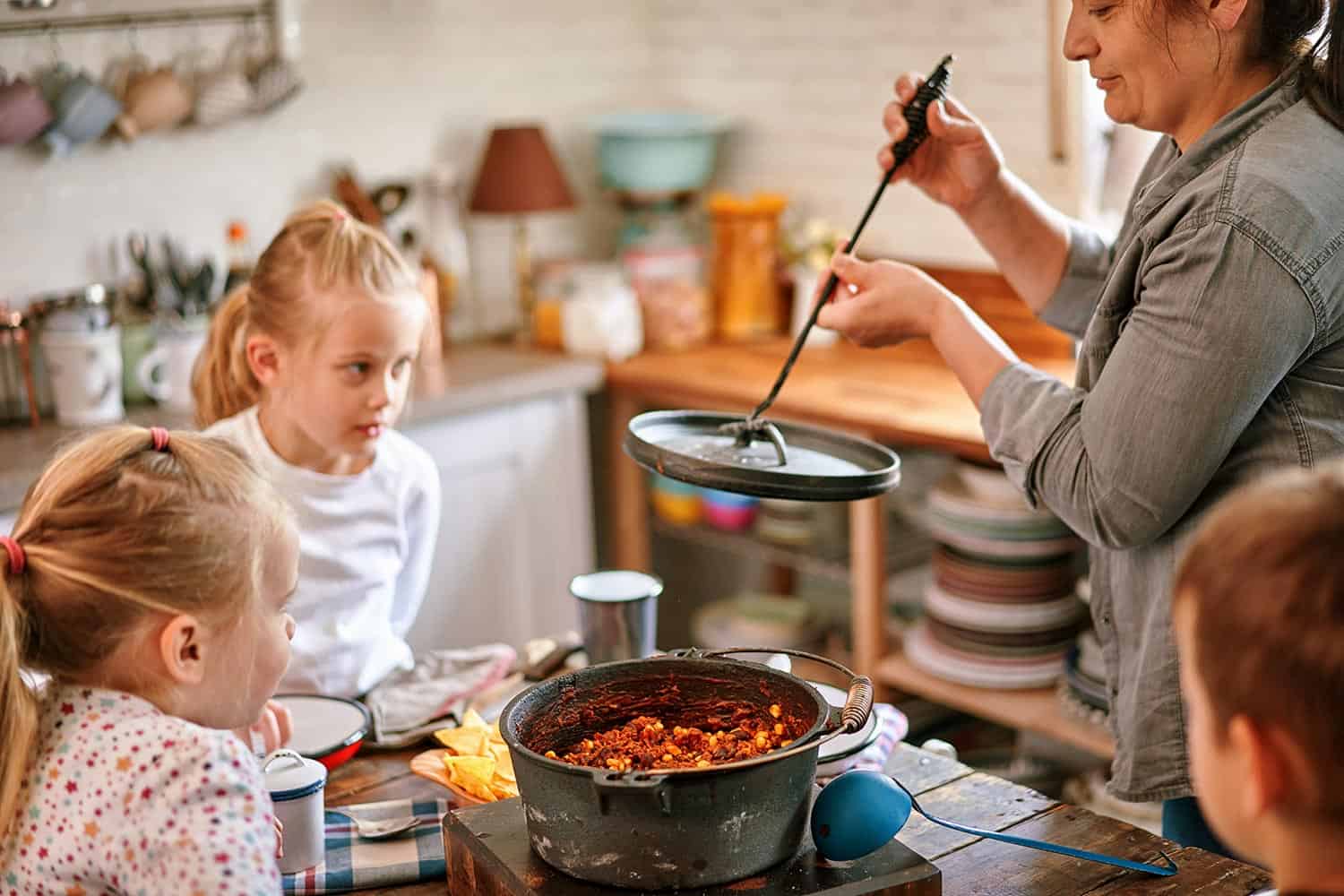
Since most heavy Dutch ovens are made with cast iron, they tend to have the best longevity. Cast iron is an incredibly durable material that could last a lifetime if you're careful with it.
Other materials like ceramic tend to crack or warp with repeated use. While this doesn't mean they can't last as long as a cast-iron Dutch oven, it's not as likely.
Just remember that the total weight of your Dutch oven doesn't necessarily correlate with its longevity. To get a good read on your product's durability, you should look at the quality of the materials your manufacturer used.
Do You Really Need A Dutch Oven?
Whether you need a Dutch oven depends on how often you cook and what you like to eat. Most chefs argue that Dutch ovens are a kitchen essential, but you have to weigh the cost against your cooking goals.
Honestly, you could get away with using other pieces of cookware like pans, pots, casserole dishes, and slow cookers for many Dutch oven recipes. On the downside, you won't enjoy the convenience of transferring your Dutch oven from the stovetop into a preheated oven.
If you're still unsure whether a Dutch oven works for your lifestyle, we'd recommend reviewing our post, "What Should You Cook In A Dutch Oven?" The recipe ideas in this post should give you a good idea of whether a Dutch oven would be worth the investment.
For even more info on how versatile Dutch ovens are, please watch this video:
Do Dutch Ovens Have Hot Handles?

Not only are Dutch ovens hot to handle, but most also have scorching hot handles! You need to wear protective gear whenever you're transferring these units out of the oven.
To help you safely pick up a heavy Dutch oven, be sure you can comfortably grasp the handles with your oven mitts. Ideally, you should test out each Dutch oven you're interested in at a store to see if you feel secure using it. You may also want to consider using wrist braces if you have pre-existing issues like carpal tunnel.
By the way, you could learn more about Dutch oven handles in our post, "Do Le Creuset Handles Get Hot?"
Dutch Ovens — Worth Their "Weight" In Gold?
Cast-iron Dutch ovens have many uses, but they aren't the most convenient items to move from stovetop to oven. Generally, a medium-sized Dutch oven weighs a minimum of 13 pounds.
If you feel like this is too much weight for you, you should consider alternative models made with ceramic or steel. You could also research smaller-sized Dutch ovens or use other items like slow cookers, casserole dishes, and pots.
Nothing could "replace" a cast-iron Dutch oven, but there are ways you could get the benefits of this unit without straining your wrists. Just be sure to review the manufacturer's recommended uses before adding a new product to your kitchen.





